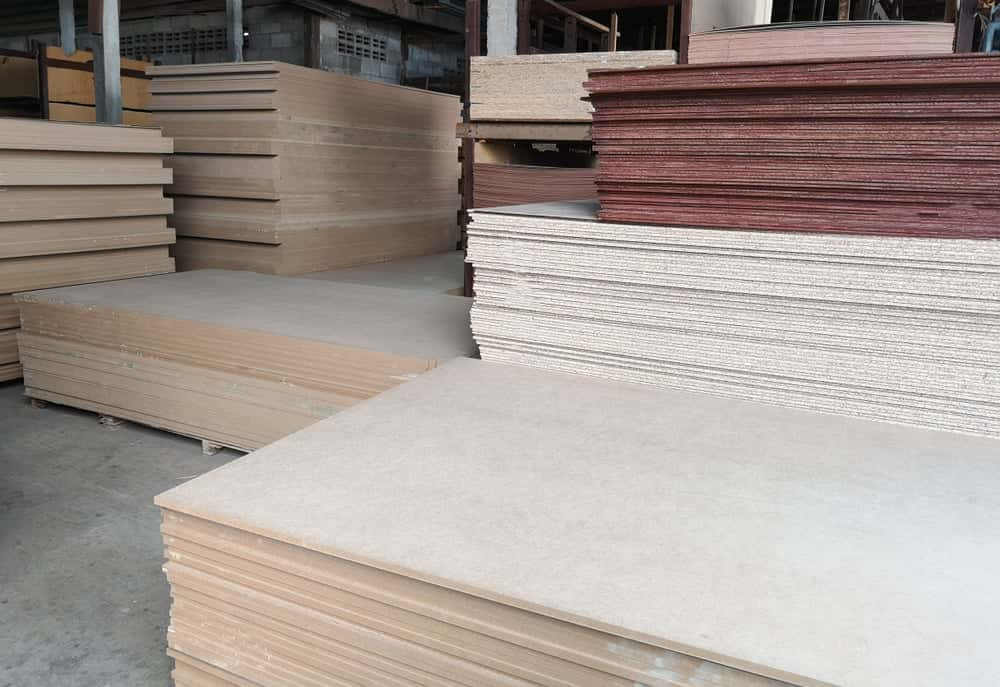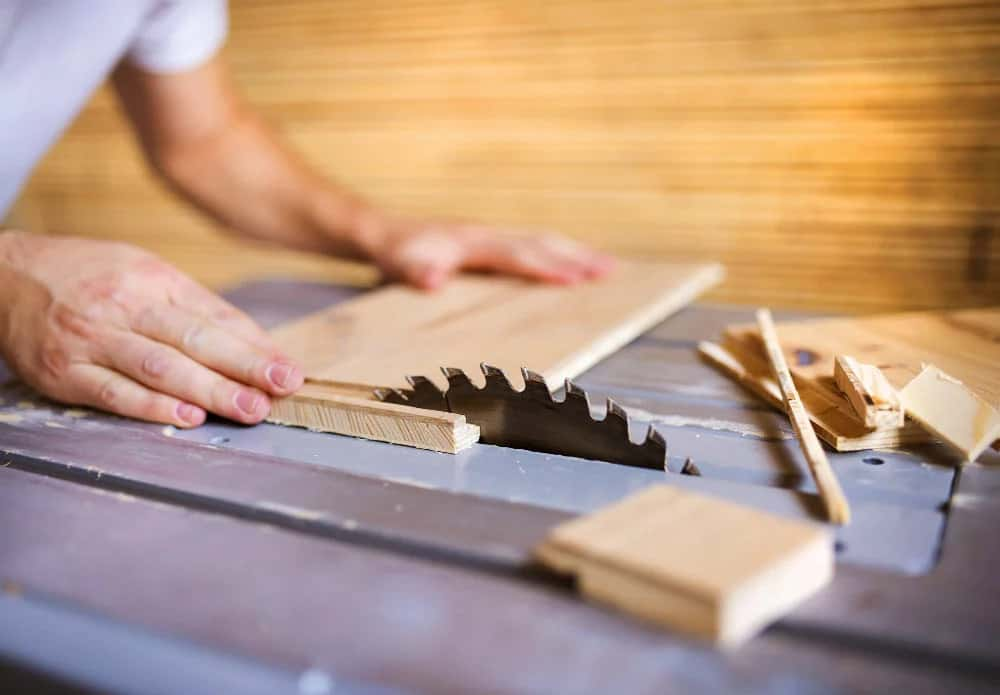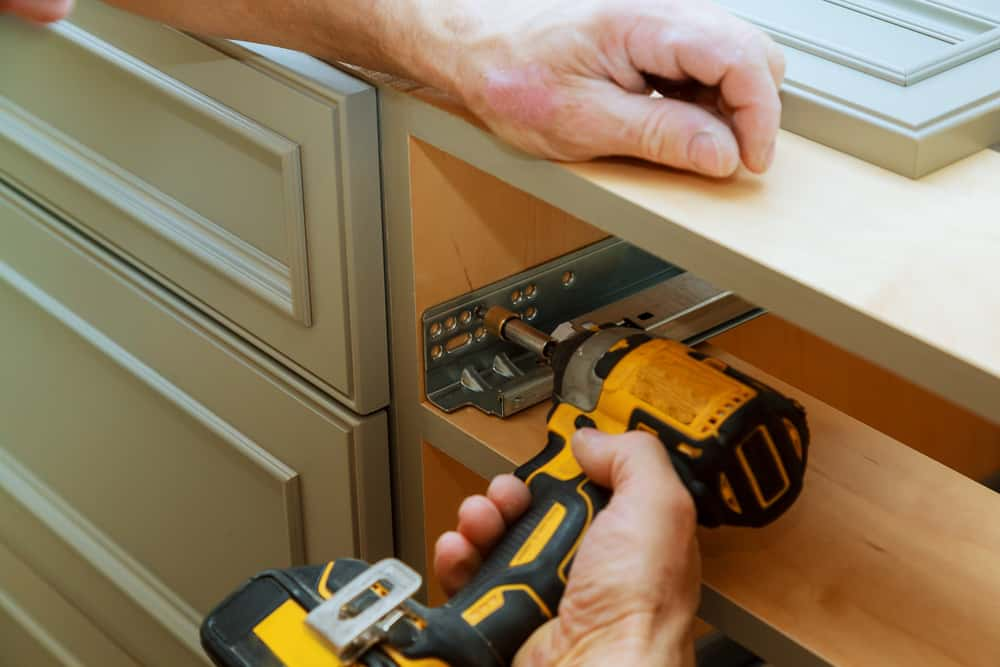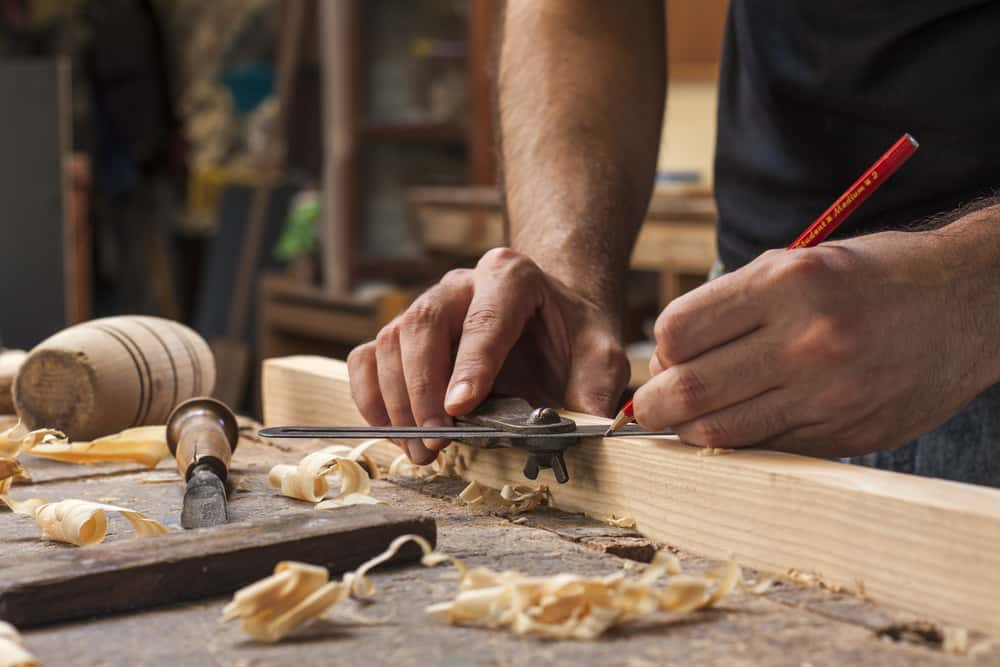The key difference between MDF Vs plywood is that the latter has more durability. Plywood is appropriate for interior design elements that require strength. MDF’s smooth surface allows it to be the perfect material for inexpensive, simplistic furniture items that can be decorated.
- What Are the Differences?
- What Is MDF?
- What Is Plywood?
- MDF and Plywood Grades
- Market Availability
- Workability
- Application in Construction
- Risks and Disadvantages
- Key Takeaways
- FAQs
While looking to get the home interiors done, most homeowners are caught in this dilemma — MDF vs Plywood, what to choose and why?
Well, we have tried to make this decision a little simple for you by listing what makes each of the materials important. Read on to find out which is better: MDF vs Plywood.
MDF vs Plywood: What Are the Differences?
| MDF | Plywood | |
| Finish | Smooth and homogeneous in cross-section. | Smooth surface and a cross-section will show different layers or plies. |
| Cost | Cheaper than plywood | More expensive |
| Environmental impact | Eco-friendly, as it re-uses waste wood products | Less eco-friendly, as it uses wood veneers |
| Workability | Can be shaped or moulded, and grooves can be cut. Using a router, smooth decorative edges can be created | Cannot be shaped or moulded, and grooves cannot be cut in the plywood. Cut edges are likely to be rough and have splinters |
| Water resistance | Unless sealed on all sides and edges with primer, paint, laminate or membrane, etc., it will soak water and swell up | More resistant to water than MDF. However, all cut edges and surfaces should be well sealed |
| Screw holding capacity | Lower screw holding capacity than plywood as the particles are very fine. If nailed at the edge of the board, it will split | Holds screws well. It can be nailed even at the edges |
| Consistency of the board | Homogeneous, consists of fine particles | Consists of layers of wood veneer, with the grains on each layer running in a different direction |
| Strength | Less strong than plywood | The layers give additional strength |
| Durability and Resilience | Durable when finished well. However, less durable than plywood | Durable when finished well. |
| Maintenance | Should not be exposed to water. Need maintenance according to the surface finish: for example, laminates should be wiped clean, veneers can be polished | BWP and BWR plywood is resistant to water. Needs maintenance according to the surface finish: for example, laminates should be wiped clean, veneers can be polished |
| Weight-bearing capability | Sags under heavy weight as it is not stiff | Does not sag. Holds weight well if there are enough layers |
| Flexibility | Inflexible board | Flexible in thin sheets |
What Is MDF?
MDF or Medium Density Fibreboard is an engineered wood product, readily available as sheets of thickness 4 mm to 24 mm. Made by breaking wood residuals or sawdust into fine particles, they are hard-pressed into a sheet with wax and resin binders at a high temperature and pressure.
What Is Plywood?
Plywood is also an engineered material, made by pressing and binding sheets of wood veneer together into a board. The layers or plies are at 90 degrees to each other for dimensional stability.
MDF vs Plywood: MDF and Plywood Grades
Both MDF and plywood are available in different thicknesses and different grades. You can choose one based on your specific needs.
MDF vs Plywood: Market Availability
- Both MDF and Plywood are available from leading manufacturers like Greenply, Century, Euro and others. Make the right material choices based on your budget and the functionality you are looking for.
- The boards are available in commercial and water-resistant grades for various applications. Marine plywood is also available as a waterproof exterior grade for use outdoors.
- They are also available in pre-laminated and pre-veneered options for a quicker turnaround of interior work.
MDF VS Plywood – Workability
MDF has a soft core and splits easily when nailed at the edges. A countersink drill is required to avoid snapping the screw head before it sinks in.
In comparison, plywood’s cross-graining structure reduces its tendency to split when a screw is nailed at the edge.
MDF has a non-directional grain structure that makes it perfect for machining, cutting, and drilling without leading to chipping or splinters. Due to the absence of knots, it becomes easier for finishing.
The major difference between MDF and Plywood is that the latter is more durable than the former. Plywood is suitable for interior design pieces that need to be stronger. The smooth surface of MDF makes it ideal for affordable and simple furniture pieces that can also be painted.
MDF VS Plywood – Application in Construction
Though initially developed for furniture, MDF is also used for internal panelling and doors in areas with limited moisture. However, MDF is majorly used for indoor applications.
Plywood is used for external stairs, doors, flooring, external cladding, interior rails and balustrades, framing, internal panelling, interior stairs, timber portal frames, shear walls, and timber joinery products in construction.
Plywood is highly preferred to produce curved surfaces as it bends easily with the grain. For instance, the top smooth surface of plywood makes it ideal for creating curved skateboard ramps.
If you’re still confused about MDF or Plywood, which is better for outdoors, here’s an answer.
When it comes to planning any outdoor project or construction of furniture for your yard, plywood is always a better option. Due to its high tendency to absorb water, MDF swells and warps when it gets wet.
Even though water can cause damage in the long term, most often, you’ll see that plywood works well outdoors.
MDF VS Plywood – Risks and Disadvantages
MDF
- MDF produces a lot of sawdust when it is cut, so take extra caution. It should be cut in a ventilated place. Using goggles, a respirator, and other protective masks is recommended.
- MDF weighs considerably more than plywood. It can be a serious issue when holding, lifting or clamping panels in place or building something that needs an overhead reach, like elevated shelves.
- MDF is not very strong and sags or bends underweight.
- MDF products emit volatile organic compounds and urea-formaldehyde that are very harmful to health at sufficient concentrations. However, coating them with paints and primers can go a long way in decreasing their emissions.
Plywood
- Plywood is more costly than MDF.
- Creating smooth cuts and edges is relatively difficult with plywood compared to MDF.
- Just like MDF, most plywood too emits urea-formaldehyde. However, formaldehyde-free plywood is available in the market.
- When it comes to water resistance, the answer to the question of MDF vs Plywood is obvious. Despite being more water resistant, plywood is still susceptible to damage over time when exposed to water.
MDF VS Plywood: Key Takeaways
- If you’re unsure of choosing between ply vs mdf boards for decorative work like scalloping, carving or moulding, then MDF is better than ply.
- Ply is safer and more durable than MDF in areas with a lot of moisture.
- MDF or plywood, both boards might have chemicals that give off toxic emissions. Always check for green manufacturing processes and ensure that surfaces are sealed well. This helps lower the risks of off-gassing in the long run.
- While your budget in the short term is important, keep an eye on the long-term durability as well. A cheaper material choice might necessitate repairs and renovations all too soon.
- The usual sizes of boards are 4’ x 8’ or 3’ x 7’, and they are available in various thicknesses to suit your needs.
- Thin sheets of plywood are flexible and can be carved into the shape you need. MDF will crachttps://www.homelane.com/modular-kitchen-designsk when bent.
The result of the debate of MDF vs Plywood: both are widely used in interior décor. However, your choice of material should be made based on your needs. If you are still confused, reach out to the experts at HomeLane. You can also visit our website if you are looking for inspiration for living room designs, modular kitchens and even wardrobe designs.
Head over today!
FAQs
1. Which Is Better, MDF or Plywood?
While they may appear similar, selecting the right material – MDF vs Plywood – for your home can be a puzzle. Both have their benefits and flaws depending on their construction.
To help you make the right choice let’s discuss some primary differences between MDF and plywood.
- Since plywood is made with wood strips, it looks more like real wood. Higher grades of plywood are attractive, smooth and better in appearance than MDF.
- MDF has a soft surface which tends to split under pressure. As MDF is easy to cut, it is best suited to make furniture pieces, cabinet doors or frames.
With MDF and plywood, difference is that MDF is the better choice for decorative use or indoor furniture, plywood is very good for outdoor use.
2. Is MDF More Expensive than Plywood?
Higher grades of plywood are more costly due to their natural hardwood or softwood grain structure, making them more aesthetically pleasing. The lower grades are usually used in construction work where they will not be visible (e.g. for subflooring).
If price is your only selection criteria for plywood and MDF, then MDF wins the MDF wood vs plywood price wars all the time.
3. Is Plywood Better than MDF for Cabinets?
The fact that plywood is lighter and easier to handle makes it the most preferred choice among cabinet installers. When it comes to MDF vs plywood strength, plywood is stronger, so manufacturers don’t require much material to achieve the same strength.
Moreover, most plywood cabinets need fewer anchor screws to hold them to the wall. This eliminates the risk of damaging the cabinetry during installation, making it the clear winner to the debate MDF vs plywood cabinets.
Popular Services
Modular Kitchen Designs | Home Interior Designs | Wardrobe Designs | Living Room Designs | Bathroom Designs | Space Saving Furniture | Home Office Designs | Pooja Room designs | Foyer Interior Design | Kids Bedroom Design | Interior Lighting Design |False Ceiling | Home Wallpaper | Furniture Design
Popular Locations
Modular Kitchen In Ahmedabad | Modular Kitchen In Mumbai | Wardrobe Designs In Chennai | Wardrobe Designs In Delhi| Interior Design In Mumbai | Interior Design In Delhi
Popular Blogs
Party Ideas for Holi | Assam Type House Design | Pop Designs for Bedroom | Window Grill Design | Plinth Area | MDF Vs Particle Board | Wall Colour Combinations | Vastu Shastra Colors For Living Room | Classical Interior Design | Wardrobe Dimensions | Parapet Design | How To Prevent Dust In Room | Types Of Kitchen | Wall Panel Design | Small Modular Kitchen | Pooja Room Design| HDF Wood | French Door Design | Bedroom






